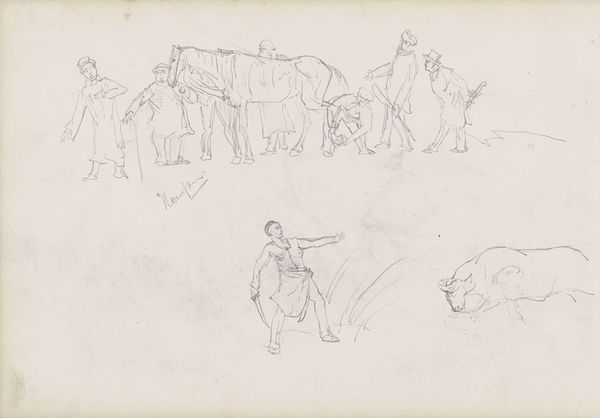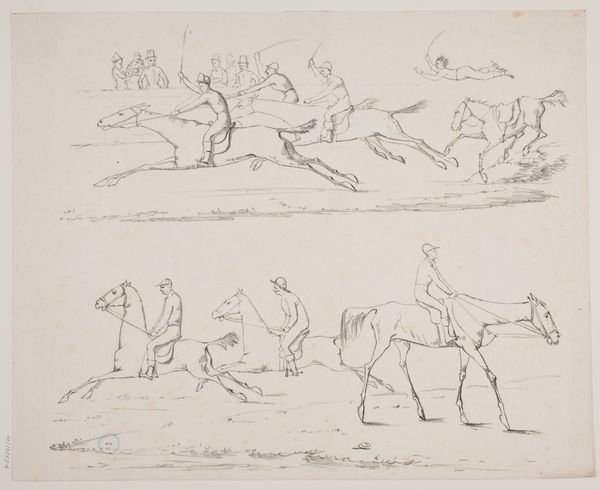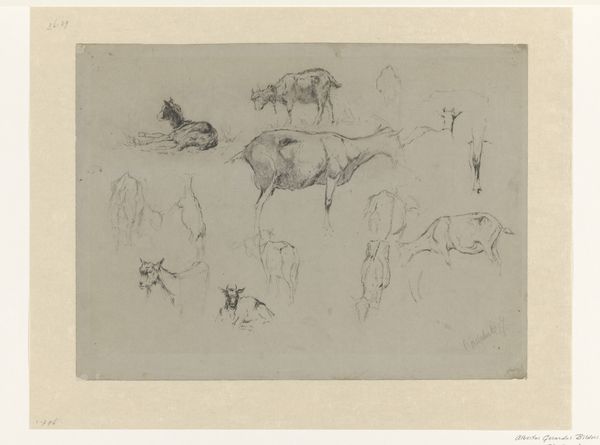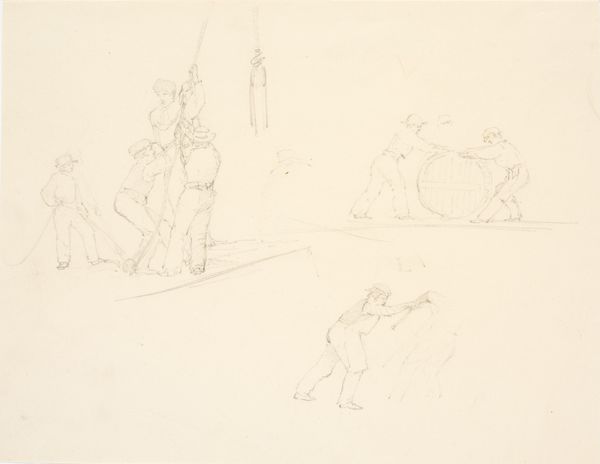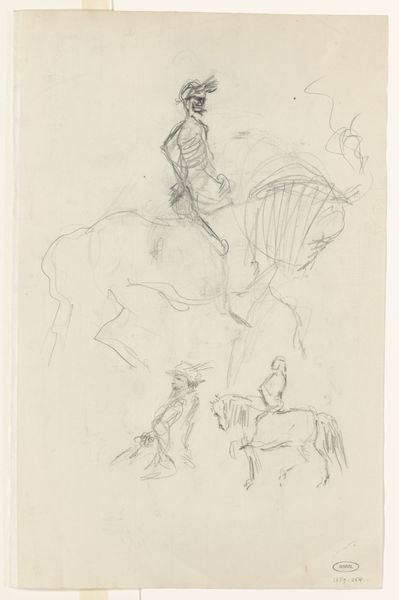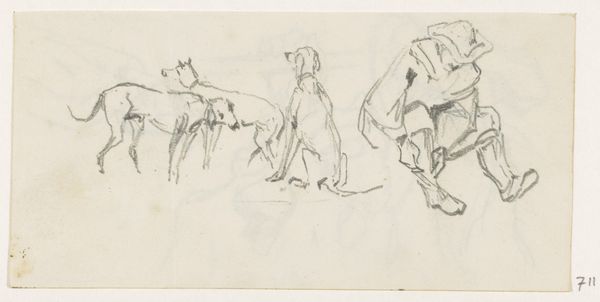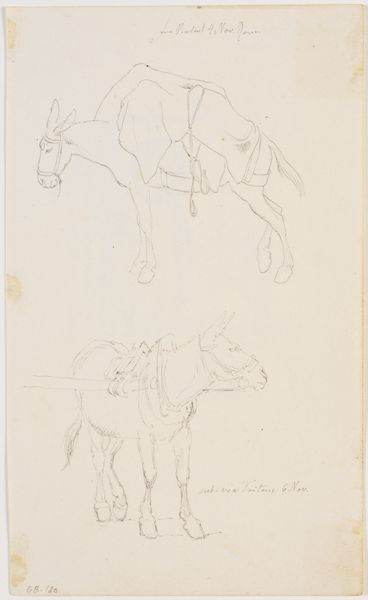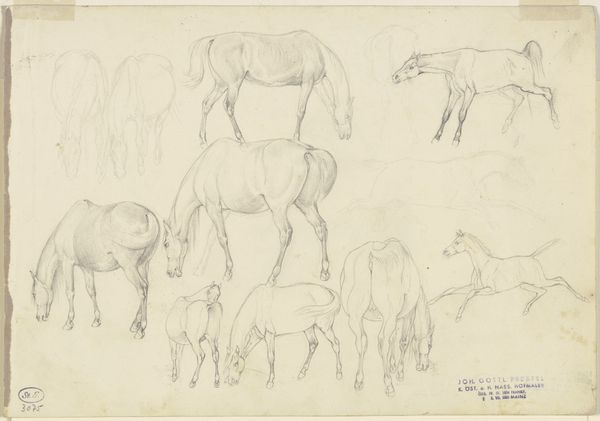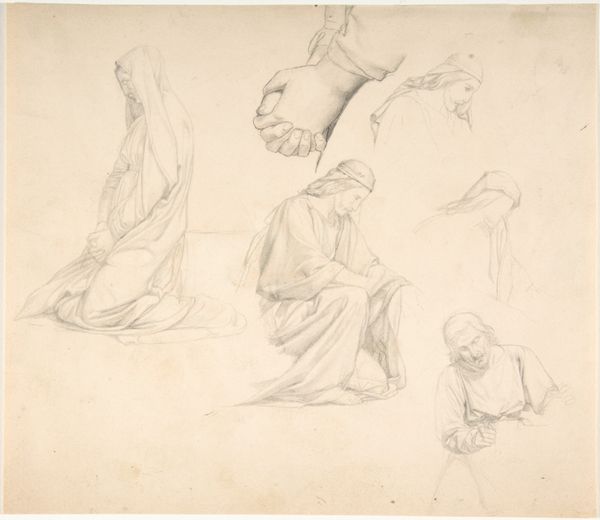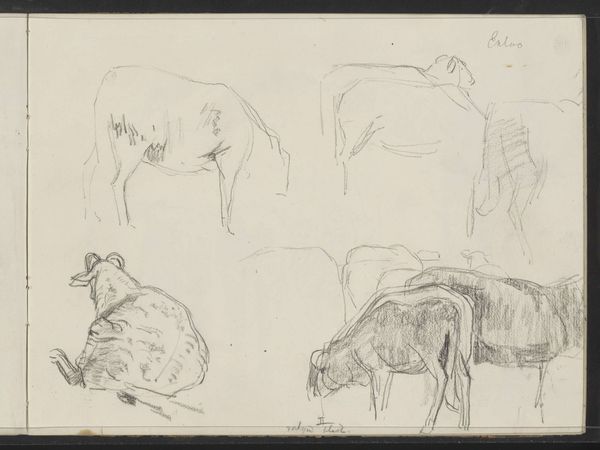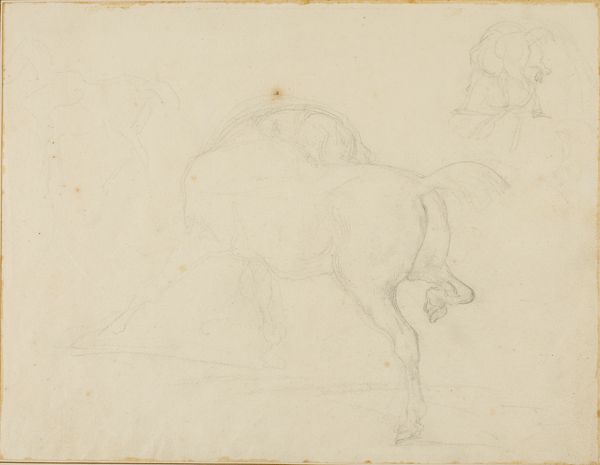
drawing, paper, pencil
#
drawing
#
animal
#
landscape
#
paper
#
pencil
Dimensions: 174 mm (height) x 254 mm (width) (bladmaal)
Curator: This is Agnes Lunn's "Studieblad med heste," or "Study Sheet with Horses," created around 1902. It's a pencil drawing on paper, currently held at the SMK, the National Gallery of Denmark. Editor: It has a dreamy, ephemeral quality. The pencil lines are so delicate; the horses seem almost like they could fade away into the paper itself. A sketch more than a formal artwork, one would say. Curator: Precisely. Lunn's process here is intriguing. It looks as though she was working through different poses and perhaps exploring the weight and strain on pack animals, even the material of the saddles or harnesses they would be wearing. The texture she achieves with a simple pencil is quite remarkable. Editor: It makes me think about the role of horses in early 20th-century society in Denmark. They were such crucial parts of transportation, agriculture and the military. Was Lunn depicting a certain cultural ideal here, a working-class reality or something else entirely? It's fascinating to see horses not as majestic creatures, but rather portrayed for the physical labor they endure. Curator: Yes, considering Lunn’s social circle might bring further nuance to our understanding. Was she merely illustrating these animals for scientific pursuit, or was she attempting to show some form of socio-political message about labor exploitation within this composition, despite the subtlety of the materials used? The role of the sketchbook is key to an artists development and output, I must argue. Editor: I suppose a museum context highlights these artistic production processes but simultaneously obscures Lunn's individual intent within a broader sweep of art history. It raises interesting questions about the relationship between the artist, her subject, and the world in which this drawing exists now. What meanings are constructed over time through her choice of these laboring animals for representation? Curator: Indeed, the way Lunn used these available materials provides a clear view into how she sought the articulation of labor’s value by depiction within the available resources she utilized during the process of sketching on paper with a basic pencil. Editor: It all gives a sense of immediacy and intimacy. Seeing a work like this, you’re able to see the animal through her own lens and observe historical cultural forces that have framed animal value, in both the past and even in contemporary times. Curator: Yes, a raw document that tells a layered historical and materialistic tale, it surely does. Editor: Well, seeing these equine forms represented in such fine and intimate detail has made me think about our current reliance on these animals today, it has provided much food for thought about animal exploitation.
Comments
No comments
Be the first to comment and join the conversation on the ultimate creative platform.
